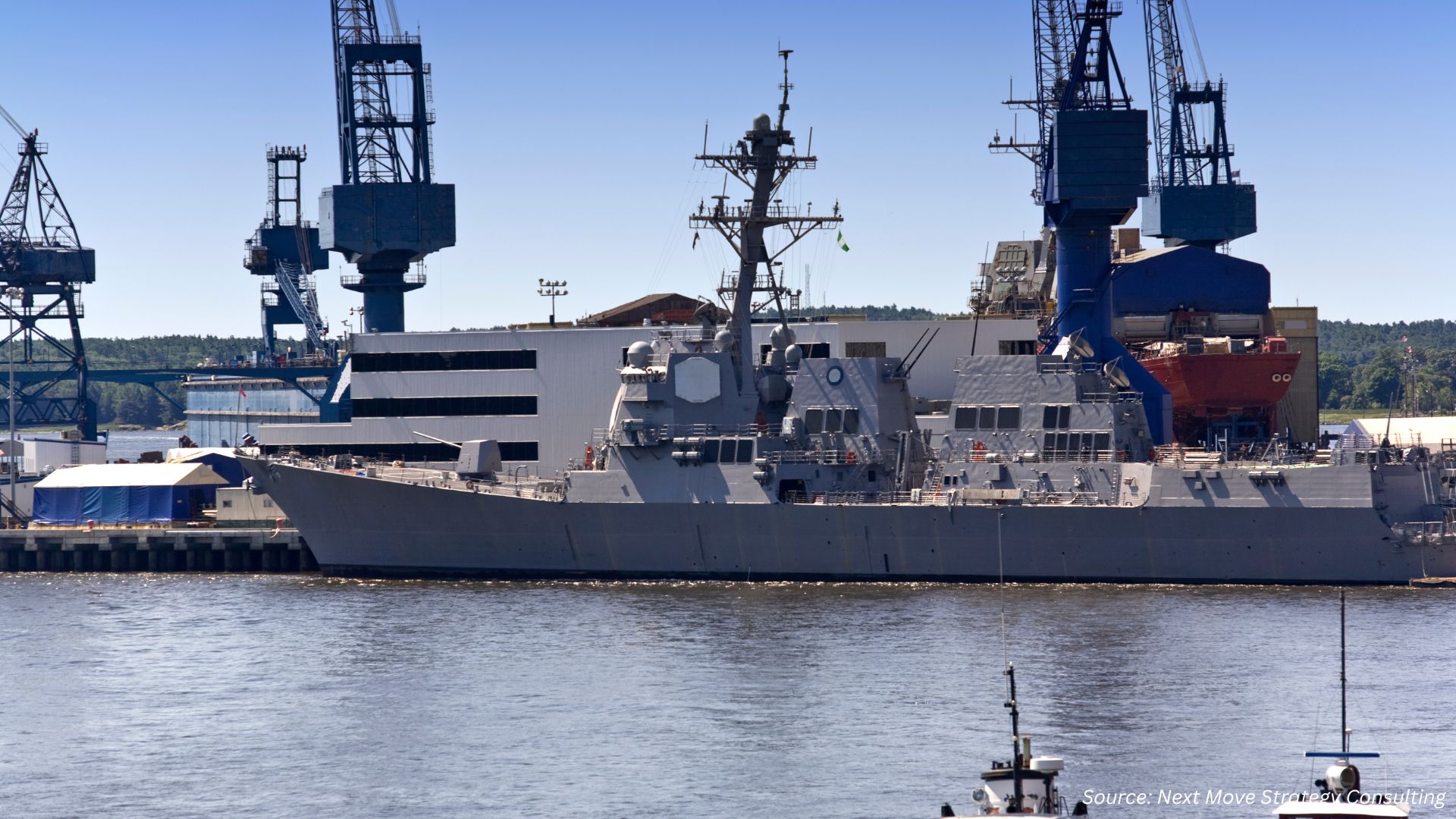Shipbuilding Sector Expansion and Investment Plans
Published: 2025-09-20

Shipbuilding is fast emerging as a strategic priority for nations aiming to strengthen maritime security and economic growth. Australia and India have recently announced ambitious plans that not only enhance their naval capabilities but also aim to establish long-term shipbuilding ecosystems. While Australia’s AUKUS submarine program focuses on defence readiness and strategic partnerships, India’s vision centers on transforming itself into a global shipbuilding hub, inspired by successful models like Japan and South Korea. Both approaches highlight the growing importance of maritime infrastructure in shaping geopolitical influence and economic resilience.
Australia’s A$12 billion Push to Advance AUKUS Submarine Program
Australia plans to invest A$12 billion ($8 billion) in new defence facilities in Western Australia to support the delivery of submarines under the AUKUS nuclear submarine agreement. The security pact, signed in 2021 by Australia, the United Kingdom, and the United States, is designed to equip Australia with nuclear-powered attack submarines from the next decade as a counterbalance to China’s growing influence in the Indo-Pacific. Meanwhile, the Trump administration has launched a formal review of the agreement.
Australia Strengthens Shipbuilding Capabilities for AUKUS Submarine Program
Defence Minister Richard Marles described the planned precinct as "critical to Australia’s shipbuilding and sustainment industry while supporting continuous naval shipbuilding in Western Australia and Australia’s nuclear-powered submarine pathway."
He emphasized that the centre-left Labor government is continuing "to increase defence spending to record levels to deliver the capabilities Australia needs."
As part of this commitment, the government invested A$127 million ($84 million) last year to upgrade facilities at the Henderson shipyard near Perth. Authorities confirmed that billions of dollars will be allocated over the next two decades to develop the site into the primary maintenance hub for Australia’s future AUKUS submarine fleet.
AUKUS Precinct to Boost Defence Projects and Job Creation
According to the government, the new precinct will also produce landing craft for the Australian Army and general-purpose frigates for the Navy, supporting approximately 10,000 local jobs.
As part of the AUKUS agreement, valued at hundreds of billions of dollars, the United States will sell several Virginia-class nuclear-powered submarines to Australia. In the longer term, Britain and Australia will collaborate on the construction of a new AUKUS-class submarine.
In July, the Republican and Democratic chairs of a U.S. congressional committee on strategic competition with China reaffirmed their strong backing for AUKUS, even as the agreement faces review by Elbridge Colby, a senior Pentagon policy official and outspoken critic of the pact.
Key Highlights:
-
Massive Investment in Defence Facilities – Australia will spend A$12 billion ($8 billion) on new shipbuilding and maintenance infrastructure in Western Australia to support the delivery of nuclear-powered submarines under the AUKUS pact.
-
Strengthening Shipbuilding and Job Creation – The Henderson shipyard near Perth is being upgraded with long-term plans to become a submarine maintenance hub, while the new precinct will also build landing craft and frigates, generating about 10,000 local jobs.
-
AUKUS Pact and Global Backing – The trilateral agreement with the U.S. and U.K. ensures Australia will acquire Virginia-class submarines before co-developing a new AUKUS-class submarine, with continued bipartisan support from U.S. lawmakers despite an ongoing policy review.
India Unveils Mega Plan to Emerge as a Global Shipbuilding Hub
The government has unveiled an ambitious plan to position India as a global shipbuilding hub, modeled on successful examples like Japan and South Korea, while encouraging greater private sector participation through a series of public-private partnership (PPP) projects to be rolled out by multiple ministries in the coming months.
In her 2025-26 budget speech, Finance Minister Nirmala Sitharaman did not announce central capital expenditure support for infrastructure, a measure included in recent budgets. However, she emphasized the government’s commitment to strengthening this vital sector through a range of alternative initiatives.
Key Infrastructure Initiatives Announced
The government’s initiatives include the establishment of a ₹25,000 crore Maritime Development Fund with 49% central contribution, the rollout of a revised UDAN scheme aimed at boosting regional air connectivity to 120 new destinations and handling 4 crore passengers over the next decade, and the launch of a new Centre–State partnership program to develop 50 tourist destinations nationwide. Additionally, hotels located at these sites will be granted infrastructure status to encourage investment and growth in the tourism sector.
Key Highlights:
-
Ambitious Shipbuilding Vision – The government aims to transform India into a global shipbuilding hub, drawing inspiration from Japan and South Korea, while promoting private sector participation through upcoming PPP projects.
-
Budgetary Focus on Alternatives – Although the 2025-26 budget did not allocate central capex for infrastructure, Finance Minister Nirmala Sitharaman reaffirmed support for the sector through alternative measures.
-
Major Infrastructure Initiatives – Key steps include a ₹25,000 crore Maritime Development Fund, expansion of the UDAN scheme to 120 new destinations, and a Centre–State partnership to develop 50 tourist sites with infrastructure status for hotels.
Comparative Overview: Australia’s AUKUS Program vs. India’s Shipbuilding Plan
|
Section |
Australia’s AUKUS Submarine Program |
India’s Shipbuilding Hub Plan |
|
Investment |
A$12 billion ($8 billion) for new defence facilities in Western Australia |
₹25,000 crore Maritime Development Fund with 49% central contribution |
|
Primary Goal |
Support delivery and maintenance of nuclear-powered submarines under AUKUS |
Position India as a global shipbuilding hub like Japan and South Korea |
|
Key Developments |
Upgrading Henderson shipyard; precinct to build submarines, landing craft, and frigates |
Launch of multiple PPP projects across ministries to boost private sector role |
Impact of Strategic Investments on the Shipbuilding Market
Positive and Negative Implications
The recent announcements by Australia and India highlight a global shift in the shipbuilding market, with governments placing stronger emphasis on maritime infrastructure, defence readiness, and private sector involvement. While these initiatives are expected to create significant opportunities, they also present challenges that could reshape the dynamics of the shipbuilding industry.
Positive Impacts
1. Boost in Global Shipbuilding Demand
- Large-scale investments, such as Australia’s A$12 billion defence program and India’s ₹25,000 crore Maritime Development Fund, are expected to stimulate demand for shipbuilding facilities and related services.
2. Employment Generation
- Australia’s AUKUS precinct is set to support around 10,000 jobs, while India’s PPP-driven projects will create opportunities across maritime, aviation, and tourism-linked sectors.
3. Technological Advancements
-
The AUKUS partnership introduces nuclear-powered submarine technology, potentially setting new benchmarks in advanced naval engineering.
-
India’s initiatives, by granting infrastructure status to hotels and boosting connectivity, indirectly strengthen allied industries like logistics and port infrastructure.
4. Private Sector Participation
- India’s PPP model encourages private investment, reducing reliance on government capex while diversifying the industry base.
5. Strengthening Geopolitical Positioning
-
For Australia, nuclear submarine capability enhances its strategic standing in the Indo-Pacific.
-
For India, positioning as a global hub boosts competitiveness in global trade and ship exports.
Negative Impacts
1. High Capital Burden
- The massive investment required, particularly in Australia, may strain defence budgets if costs escalate over decades.
2. Geopolitical Risks
- AUKUS faces external criticism and internal reviews, raising concerns about long-term stability of commitments.
3. Execution Challenges
- India’s reliance on PPP projects may face delays due to bureaucratic hurdles, funding issues, or lack of private investor confidence.
4. Environmental Concerns
- Expansion of shipbuilding and naval facilities could lead to environmental challenges, including coastal development pressures.
5. Dependency on Foreign Partners
- Australia’s reliance on U.S. and U.K. technologies could limit domestic autonomy in shipbuilding expertise.
Conclusion:
Australia and India are advancing on parallel yet distinct shipbuilding paths. Australia’s massive defence-driven investment under AUKUS strengthens its Indo-Pacific naval strategy, while India’s infrastructure-focused initiatives aim to boost global competitiveness and private participation. Together, these efforts underline how shipbuilding is set to become a defining factor in both regional security and global trade in the coming decades.
About the Author
 Karabi Sonowal is an experienced SEO Executive and Content Writer in digital marketing. She excels in SEO, content creation, and data-driven strategies that boost online visibility and engagement. Known for simplifying complex concepts, Karabi creates impactful content aligned with industry trends.
Karabi Sonowal is an experienced SEO Executive and Content Writer in digital marketing. She excels in SEO, content creation, and data-driven strategies that boost online visibility and engagement. Known for simplifying complex concepts, Karabi creates impactful content aligned with industry trends.
About the Reviewer
 Debashree Dey is a seasoned Content Writer, PR Specialist, and Assistant Manager in Digital Marketing, known for her expertise in crafting online visibility strategies and navigating the dynamic digital landscape. With a flair for developing data-driven campaigns and producing compelling, audience-focused content, she helps brands elevate their presence and deepen user engagement. Beyond her professional endeavors, Debashree finds inspiration in creative projects and design pursuits.
Debashree Dey is a seasoned Content Writer, PR Specialist, and Assistant Manager in Digital Marketing, known for her expertise in crafting online visibility strategies and navigating the dynamic digital landscape. With a flair for developing data-driven campaigns and producing compelling, audience-focused content, she helps brands elevate their presence and deepen user engagement. Beyond her professional endeavors, Debashree finds inspiration in creative projects and design pursuits.














Add Comment